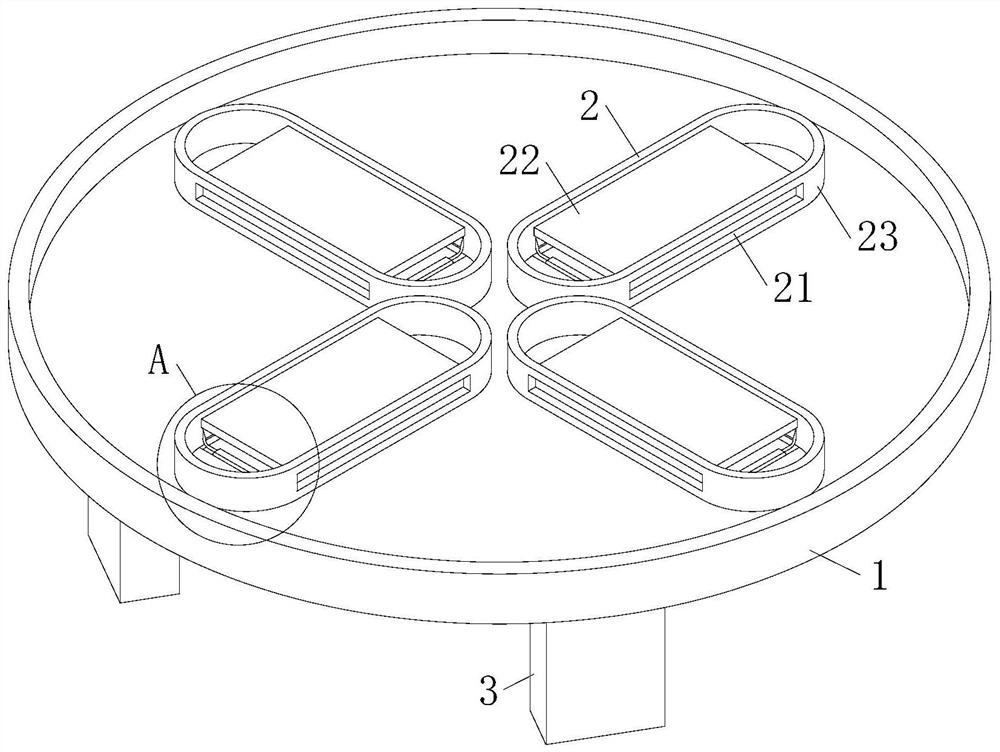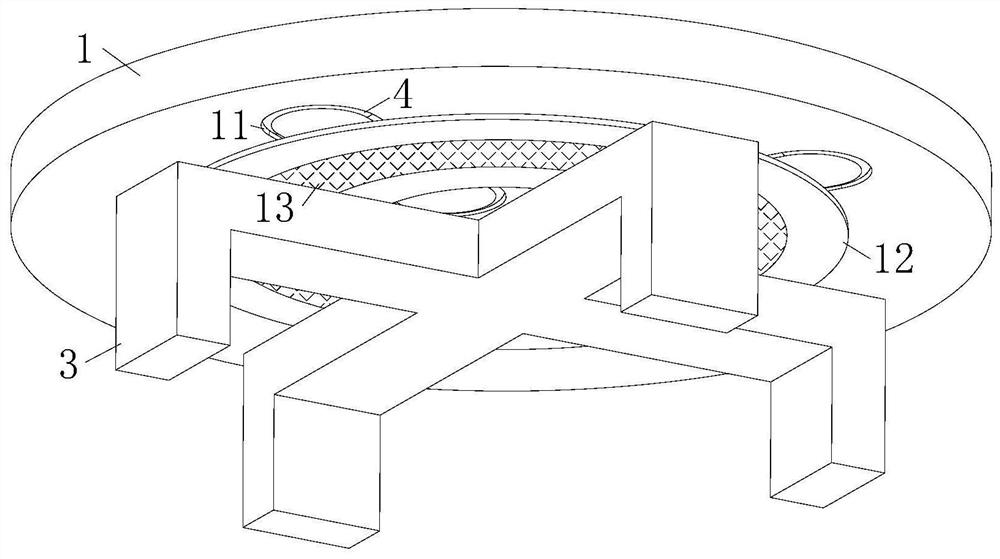Auxiliary mammary duct in-situ cancer detection system
A breast duct and auxiliary detection technology, applied in the field of breast cancer detection, can solve the problems of low accuracy, insufficient computer image recognition accuracy, limiting the detection effect of breast duct carcinoma in situ, etc., so as to save workload and enhance accuracy. Effect
- Summary
- Abstract
- Description
- Claims
- Application Information
AI Technical Summary
Problems solved by technology
Method used
Image
Examples
Embodiment approach
[0026] As an embodiment of the present invention, the bottom of the sampling vessel 1 is provided with a circumferentially distributed through groove 11, and a semiconductor refrigeration chip 4 is installed in the through groove 11; Above, the slicing disc 2 is at the same height position as the bottom surface of the sampling dish 1, and the slicing disc 2 seals the port of the through groove 11 in the sampling dish 1; Pathological slices are made by the slicing knife 22 and gradually fill up the space of the slicing disc 2, but there are still a large amount of unsliced cells and tissues in the sampling dish 1, and the small space of the slicing disc 2 limits the production efficiency of the pathological slices; by setting The slicing disk 2 surrounding the sampling dish 1 makes the capacity of multiple slicing disks 2 meet the amount of cell tissue in the volume of the sampling dish 1, and enhances the number of pathological slices made at a time, and the through groove ar...
PUM
 Login to View More
Login to View More Abstract
Description
Claims
Application Information
 Login to View More
Login to View More - Generate Ideas
- Intellectual Property
- Life Sciences
- Materials
- Tech Scout
- Unparalleled Data Quality
- Higher Quality Content
- 60% Fewer Hallucinations
Browse by: Latest US Patents, China's latest patents, Technical Efficacy Thesaurus, Application Domain, Technology Topic, Popular Technical Reports.
© 2025 PatSnap. All rights reserved.Legal|Privacy policy|Modern Slavery Act Transparency Statement|Sitemap|About US| Contact US: help@patsnap.com



